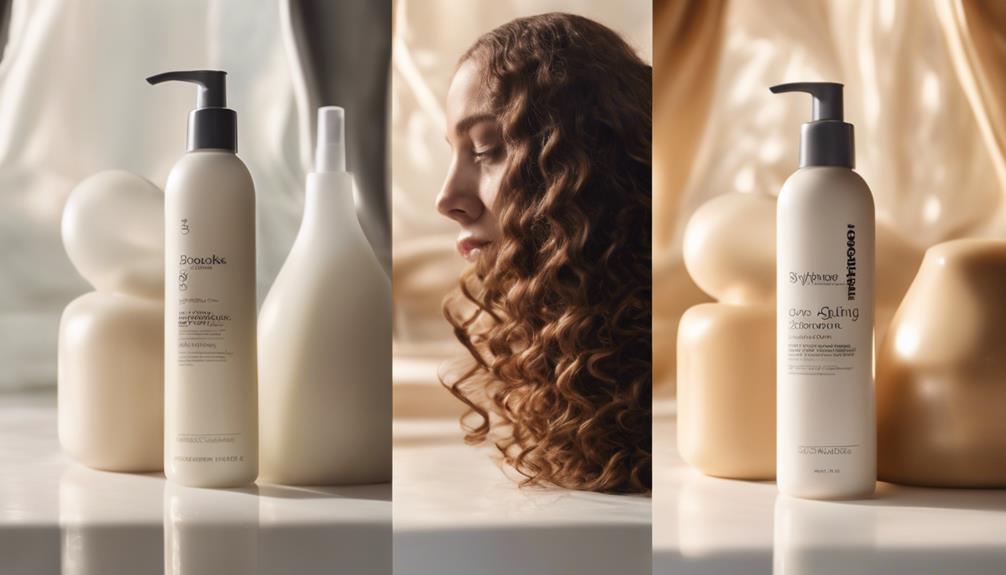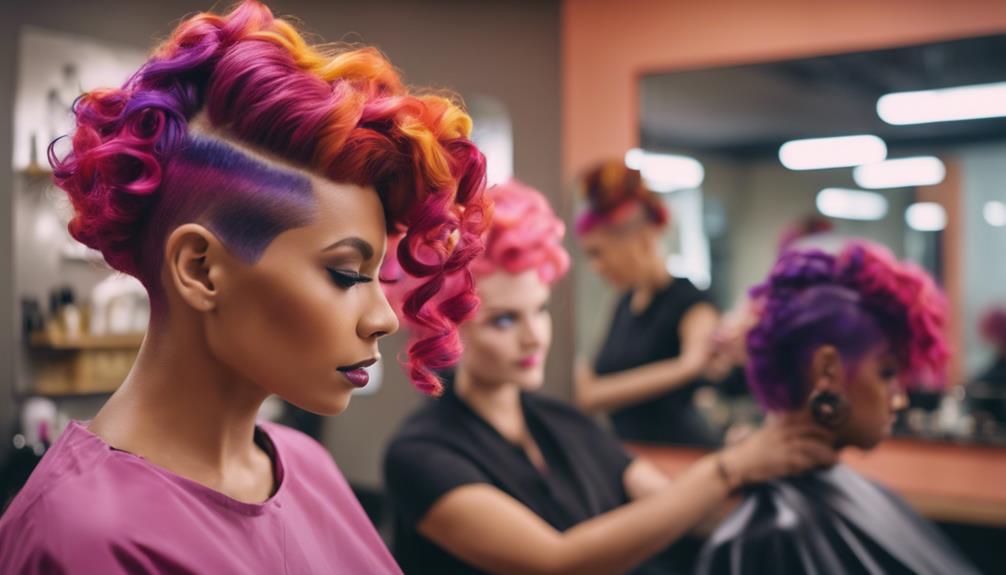When choosing between styling milk and leave-in conditioner, consider your hair type and needs. Styling milk is lightweight, making it perfect for fine or low porosity hair, providing hydration and curl definition without weighing down your hair. On the other hand, leave-in conditioners offer deep moisture and protection, which is ideal for dry or coarse hair. If you struggle with frizz, a leave-in conditioner may be more suitable for you, while styling milk can enhance your natural texture. Apply them differently: use styling milk on damp hair for definition, and leave-in for moisture and detangling. By exploring the unique benefits of each product, you can determine the best choice for your hair.
Key Takeaways
- Hair milk is ideal for fine or low porosity hair, providing lightweight hydration and curl definition without heaviness.
- Leave-in conditioners are best for dry, damaged, or coarse hair, offering intense moisture and protection.
- Hair milk enhances natural texture and reduces frizz, while leave-in conditioners prioritize detangling and manageability.
- Application order matters: use leave-in conditioner on damp hair first, then layer with hair milk for optimal results.
Definition and Purpose
Hair milk and leave-in conditioner serve distinct purposes in your hair care routine, each designed to address specific needs for hydration and styling.
Hair milk is a lightweight moisturizer that hydrates and nourishes your hair. It often contains oils and proteins that enhance curl definition, making it a great choice for various hair types, especially fine hair. If you're looking for a product that adds moisture without weighing your hair down, hair milk is your go-to option.
On the other hand, leave-in conditioner focuses on moisture retention and protection after washing. It's ideal for detangling and controlling frizz, particularly beneficial for dry, damaged, or coarse hair. If you have higher moisture requirements or struggle with unruly hair, a leave-in conditioner can provide that extra layer of hydration and care.
Choosing between hair milk and leave-in conditioner largely depends on your hair's specific needs and desired outcomes. Consider your hair type, texture, and the level of moisture your strands require to maintain health and style effectively.
Key Ingredients Comparison
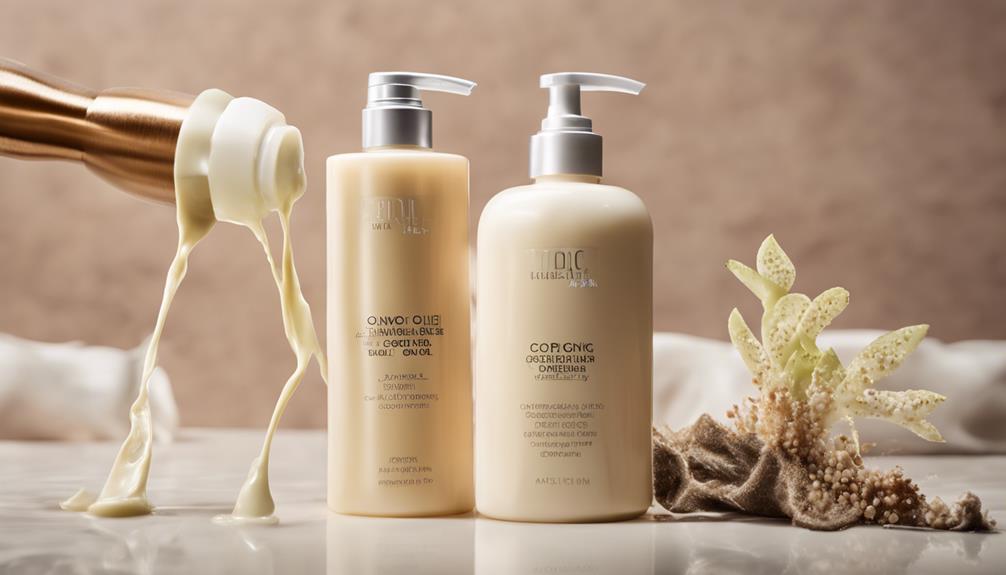
When comparing key ingredients, you'll notice distinct differences in functionality between hair milk and leave-in conditioners.
While hair milk focuses on lightweight hydration and curl enhancement, leave-in conditioners prioritize deep moisture and protection.
Understanding these variations can help you choose the right product for your hair's texture and needs.
Ingredient Functionality Differences
Understanding the key ingredient differences between styling milk and leave-in conditioner can help you choose the right product for your hair type and styling needs.
Styling milks often contain lightweight moisture ingredients like coconut oil, shea butter, and aloe vera. These components hydrate your hair without adding bulk, making them a great option if you have fine hair types. They enhance curl definition and reduce frizz with their airy consistency.
On the other hand, leave-in conditioners are formulated with heavier ingredients such as silicones, glycerin, and proteins. These components offer intense moisture and smoothness, which makes them more suitable for dry or coarse hair types. While they excel at detangling and providing overall protection, they may weigh your hair down if it's fine or thin.
Ultimately, the choice between styling milk and leave-in conditioner hinges on your specific needs. If you're looking for lightweight moisture and curl enhancement, styling milk is your best bet. However, if you need serious hydration and protection, especially for drier hair, leave-in conditioners will serve you well.
Moisture Retention Capabilities
Moisture retention capabilities vary considerably between styling milk and leave-in conditioner due to their key ingredients and formulations.
Leave-in conditioners often contain heavier ingredients like silicones and glycerin, which offer prolonged moisture retention and protection. This makes them ideal for dry or damaged hair, as they lock in hydration for extended periods. If you're looking for long-lasting hydration, leave-in conditioners are your best bet.
On the other hand, hair milks feature lightweight ingredients such as coconut oil and aloe vera. These allow for quick absorption and hydration without weighing down fine or thin hair. If you have low porosity hair, hair milks can enhance curl definition while maintaining moisture balance, making them a great choice for daily use.
Both products utilize water as a primary hydrating agent, but leave-in conditioners may also include polymers that improve slip and detangling.
Ultimately, the effectiveness of each product's moisture retention will depend on your individual hair needs. Whether you choose leave-in conditioners for their heavier hydration or hair milks for their lightweight moisture, understanding these differences can help you make the right choice for your hair care routine.
Textural Impact on Hair
The textural impact of hair products like styling milk and leave-in conditioner hinges on their key ingredients, which can greatly influence how your hair feels and performs.
Hair milks typically have a lighter consistency, often enriched with coconut oil and shea butter. These ingredients provide quick-absorbing hydration, enhance curl definition, and reduce frizz without weighing your hair down. This makes hair milk an excellent choice for those with fine or low porosity hair types, as it delivers lightweight moisture.
On the other hand, leave-in conditioners have a thicker texture, usually packed with silicones and glycerin. These moisturizers offer prolonged hydration and protection, making them perfect for detangling and managing dry or damaged hair. Their key ingredients, including proteins and humectants, can strengthen your hair and improve elasticity, but they may not penetrate low porosity hair effectively due to their heavier formulation.
Choosing between hair milks and leave-in conditioners depends on your hair's needs. If you want to enhance your natural texture and keep it light, go for hair milk. If you prioritize deep moisture and protection, opt for leave-in conditioners.
Application Techniques Overview
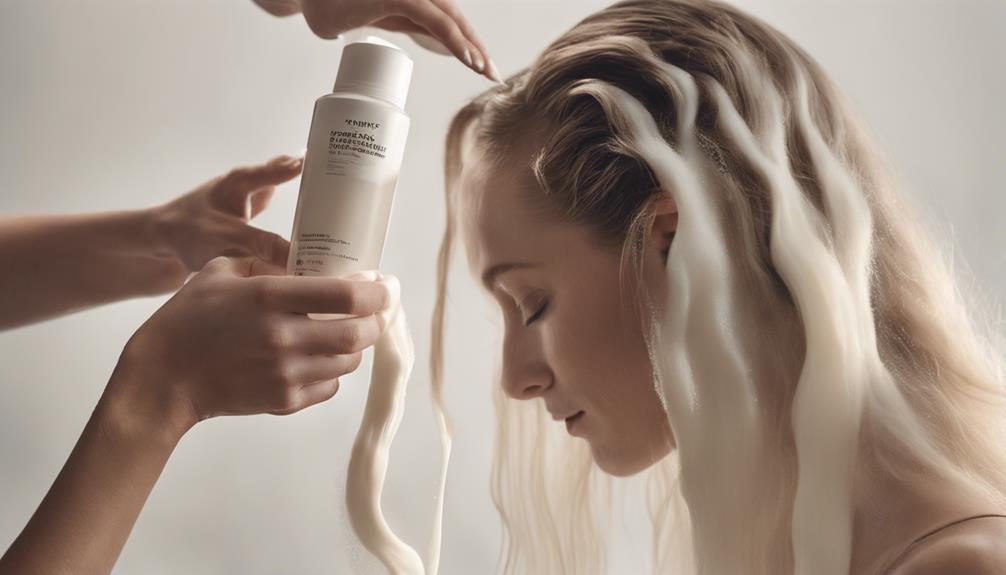
When applying hair milk, you'll want to focus on damp hair for the best results, distributing it through the ends to enhance your curls.
In contrast, leave-in conditioner can be used on either damp or dry hair, allowing for flexibility in styling.
Understanding these ideal application methods and layering techniques will help you achieve the desired look and moisture level tailored to your hair type.
Optimal Application Methods
Applying hair milk and leave-in conditioner effectively can greatly enhance your styling results and maintain hair health.
When using hair milks, apply it on damp hair for ideal absorption. Focus on the ends to target dryness and boost curl definition. You can scrunch the product in to enhance your curls further. Remember, hair milk is lightweight, so use it sparingly to avoid weighing down fine hair.
On the other hand, leave-in conditioners can be applied on either damp or dry hair. Distribute the product evenly throughout your hair to guarantee extensive moisture and detangling. For thicker or coarser hair types, you might need to use more leave-in conditioner to achieve the desired hydration levels. Smooth the product through your hair to reduce frizz and improve manageability.
Both hair milks and leave-in conditioners can be applied using your fingers or a comb to guarantee even distribution. However, keep in mind that hair milk typically requires less product than leave-in conditioners.
Layering Techniques Explained
How can you effectively layer styling milk and leave-in conditioner for the best results?
Start with damp hair and apply the leave-in conditioner first. This step provides essential moisture and helps detangle your hair. Use a wide-tooth comb or your fingers to work it through, focusing on the ends for even distribution.
After letting the leave-in conditioner absorb for a few minutes, it's time for the styling milk. Apply it in small amounts, concentrating on sections of your hair. This enhances curl definition and minimizes frizz without weighing your hair down.
Experiment with your layering techniques by adjusting the amount of each product based on your hair type and texture. Some may need more leave-in conditioner for added moisture, while others might prefer extra styling milk for definition.
Benefits of Each Product
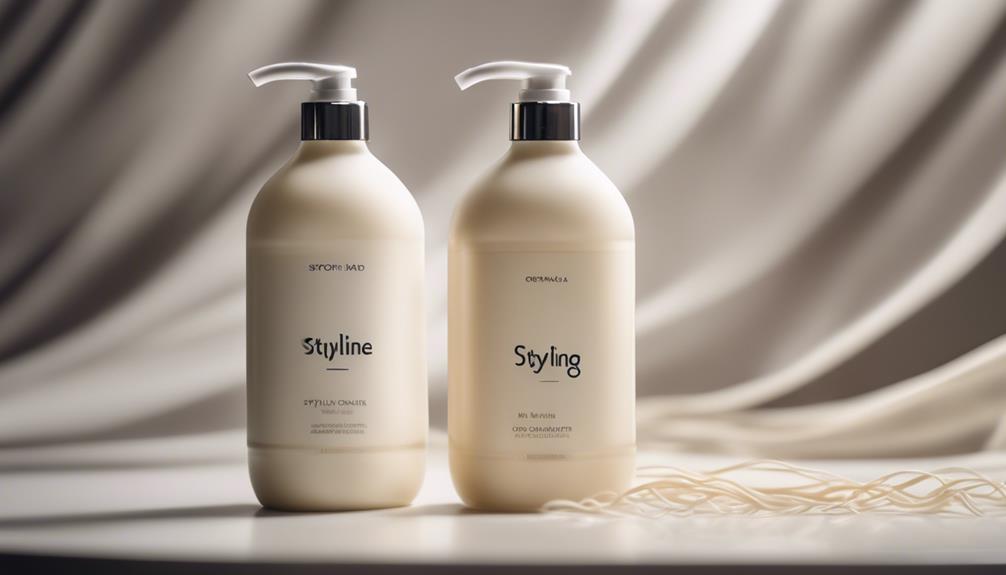
Both Hair Milk and Leave-In Conditioner offer unique benefits tailored to different hair types and needs, ensuring your hair stays healthy and manageable.
Hair milks provide lightweight hydration, making them perfect for enhancing curl definition and reducing frizz, especially for fine to medium hair types. The nourishing vegetable oils and proteins in hair milks promote softness and moisture retention without weighing your hair down, allowing your natural texture to shine.
On the other hand, leave-in conditioners deliver intense moisture and protection, making them ideal for dry, damaged, or coarse hair. These moisturizers often contain silicones and humectants that smooth the hair's surface, making it easier to detangle and style.
Leave-in conditioners improve manageability and greatly reduce breakage, helping to maintain the overall health of your hair.
Choosing Based on Hair Type
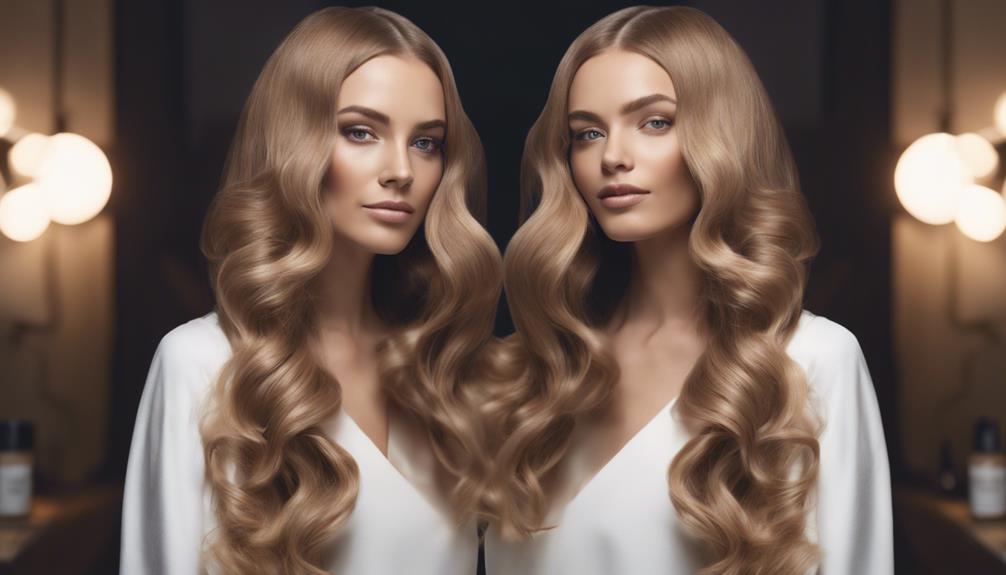
Choosing the right product depends on your hair type and its specific needs. If you have fine or low porosity hair, hair milk might be your best bet. It provides lightweight hydration without weighing your hair down, enhancing curl definition without the heaviness.
On the other hand, if your hair is dry, damaged, or coarse, a leave-in conditioner is likely more suitable. These products offer deeper moisture and protection against breakage, which is vital for maintaining healthy hair.
Curly or coily hair types often thrive with hair milk, as it helps reduce frizz and define curls beautifully. Conversely, if your hair is straight or wavy, you may prefer the smoothing effects of a leave-in conditioner for a sleek appearance.
For those with low porosity hair, opt for hair milks over heavy leave-in conditioners, as they hydrate effectively without the risk of buildup from heavy proteins.
Ultimately, it's important to take into account your hair's texture, porosity, and hydration needs. By aligning your choice with your hair type, you can achieve the best results and keep your hair looking its finest.
Styling Needs and Preferences
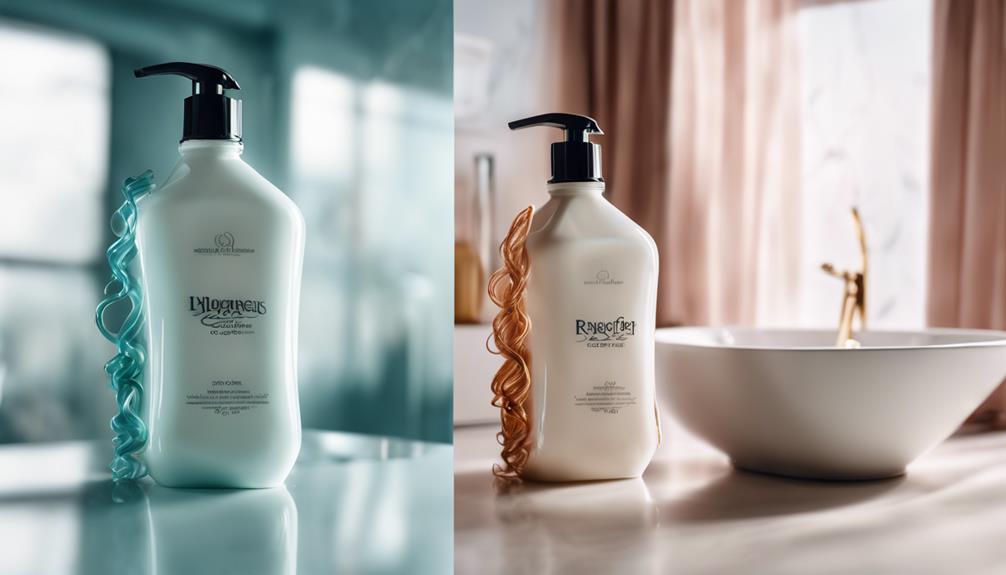
Understanding your styling needs and preferences is key to selecting between styling milk and leave-in conditioner, as each product serves a distinct purpose in your hair care routine. If you’re looking for lightweight, flexible hold and added shine, styling milk may be the better choice for you. On the other hand, leave-in conditioner is great for moisturizing and detangling, making it ideal for those with dry or damaged hair. Understanding the differences in styling lotion benefits can help you make the right choice for your hair. Both styling milk and leave-in conditioner offer their own unique benefits, so it’s important to consider your hair type and specific needs when making a decision. Some people may find that using both products in their hair care routine provides the perfect balance of moisture, hold, and shine. By understanding the styling lotion benefits, you can determine which product will help you achieve your desired hairstyle and overall hair health. Ultimately, experimenting with different products and finding what works best for your hair is key to achieving the look and feel you want.
If you're looking to enhance and define your curls or waves, styling milks might be your go-to. Their lightweight, liquid consistency makes them ideal for fine hair, providing hold without weighing it down. You can apply styling milk to damp or dry hair, giving you flexibility in your styling process.
On the other hand, if hydration and detangling are your priorities, leave-in conditioners are the better choice. They're formulated with emollients and humectants, making them perfect for locking in moisture, especially when applied to damp hair. For individuals with thicker or coarser hair, leave-in conditioners provide the richer hydration needed to prevent breakage and maintain overall health.
Ultimately, your hair type suitability plays a significant role in this decision. Assess whether your hair tends to be fine or coarse, and choose the product that aligns with your specific styling needs to achieve the best results.
Expert Recommendations and Tips
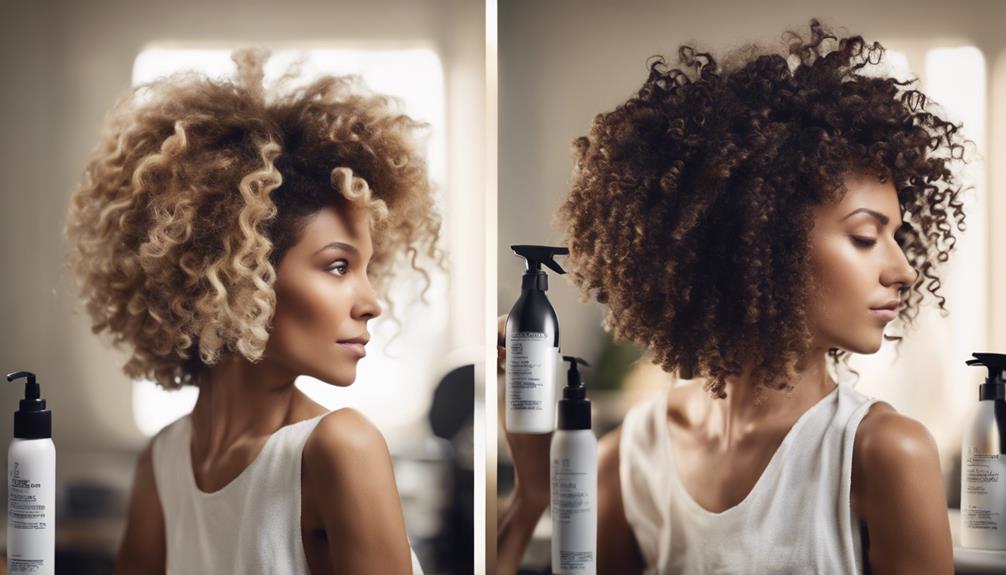
To achieve the best results, experts recommend evaluating your hair type and needs before selecting between styling milk and leave-in conditioner. Hair milks are ideal for those with fine hair seeking lightweight hydration, while leave-in conditioners cater to thicker or damaged hair needing deeper moisture and protection.
| Product Type | Best For | Application Tips |
|---|---|---|
| Hair Milks | Fine hair, natural curls | Apply on damp hair, focus on ends |
| Leave-In Conditioners | Thick/damaged hair, detangling | Use on damp or dry hair, versatile application |
| Combination Use | All hair types | Apply leave-in first, then hair milk |
If you want to enhance curl definition and softness, go for hair milks. For detangling and frizz reduction, leave-in conditioners are your best bet. Remember, layering these products can help you hydrate while also achieving the desired texture, so don't hesitate to experiment and find the best routine for your hair!
Frequently Asked Questions
Is Styling Cream the Same as Leave-In Conditioner?
No, styling cream isn't the same as leave-in conditioner. Styling cream provides hold and control for your hairstyle, while leave-in conditioner focuses on nourishing and hydrating your hair, making them serve different purposes.
What Does Style Milk Do for Your Hair?
You might think styling milk's just another product, but it hydrates your hair while defining curls and reducing frizz. It's lightweight, versatile, and makes your hair more manageable, enhancing overall health and style effortlessly.
Can I Use Leave-In Conditioner as a Styling Product?
Yes, you can use leave-in conditioner as a styling product. It hydrates and detangles, giving a natural look, but don't expect the same hold or definition as dedicated styling products for structured styles.
How Do You Know if I Should Use Leave in Conditioner?
If your hair's dry and tangled, you should definitely use leave-in conditioner. But if it's oily or fine, you might skip it. Assess your hair's needs, then choose what works best for you.
Conclusion
In the battle between styling milk and leave-in conditioner, each product shines in its own right.
While styling milk offers a lightweight hold and enhances curls, leave-in conditioner deeply nourishes and hydrates your strands.
Depending on your hair type and styling needs, one might serve you better than the other.
Ultimately, it's about finding the perfect balance—embracing the structure of styling milk while cherishing the moisture of leave-in conditioner.
Your hair deserves the best of both worlds!
